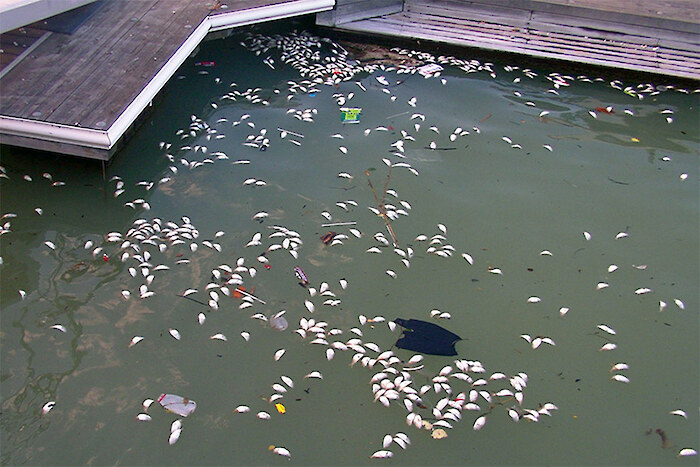
The oxygen dissolved in water is critical to the survival of fish and shellfish living in it. All of the living creatures in the water need oxygen to survive but as dissolved oxygen levels decrease, it becomes harder for animals to get the oxygen they need to survive. Low dissolved oxygen is often the result of eutrophication, which occurs when there are too many nutrients (such as nitrogen and phosphorus) in the water which cause dense algal blooms to grow. When the algae die and decompose, the decomposition process uses up dissolved oxygen in the water, reducing the oxygen available for fish, and other organisms, which may become stressed or even die.
How is it measured?
Dissolved oxygen was measured at approximately 56 stations, up to 12 times between June and September, using a water quality probe at one meter from the bottom of the surface of the water.
Threshold levels
| Criteria Threshold | Overall Score Calculation |
|---|---|
| > 5.49 mg/L | 90% - 100% |
| 4.89 - 5.49 mg/L | 80% - 90% |
| 4.29 - 4.89 mg/L | 70% - 80% |
| 3.68 - 4.29 mg/L | 60% - 70% |
| < 3.68 mg/L | < 60% |
